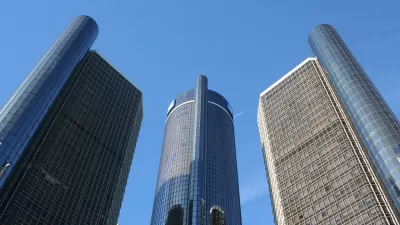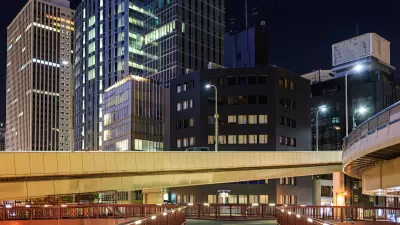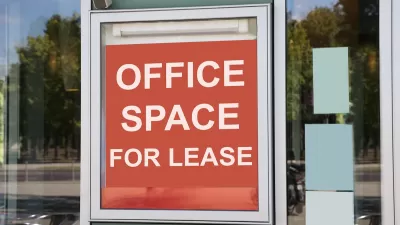Adaptive reuse is a hot concept, but regulatory and financial hurdles have made it slow to catch on in practice.

With many companies offering their employees long-term remote work and ending their leases on large urban office buildings, the future of business districts may lie in adaptive reuse, writes Henry Grabar in Slate. "Many business districts face the highest vacancy rates in decades, and a hundred million square feet of new supply from the pre-pandemic cycle is still coming online each quarter."
"There’s ample precedent for adaptive reuse as an engine of urban revitalization. Light industrial buildings in New York City’s Cast Iron Historic District (today’s SoHo) were converted into live-work lofts starting in the 1960s. The rich stock of 20th century office buildings in Chicago and Los Angeles have been converted into apartments. New England mills have been appropriated as hotels and museums."
Adaptive reuse is "one of the greenest constructions you can do," says Scott Maenpaa, a project manager at Boston-based the Architectural Team, and can be 20 to 30 percent cheaper than new construction, but conversions across the country have been relatively slow. Long-term leases, in many cases ten years or more, are creating a lag in office building vacancy, and a complicated legal landscape makes the process difficult and expensive. So far, "office owners by and large aren’t yet trying to unload their buildings at conversion-friendly prices."
"'The current controls in place make it really difficult to be able to convert from office or hotel to residential,' said Sheila Pozon, a land use lawyer at Kramer Levin." Cities like Dallas and Baltimore "did not see significant conversion of older offices until they offered sizable tax breaks," indicating that, while adaptive reuse seems "a bigger trend will require a push."
FULL STORY: Could Your Empty Office Turn Into Apartments?

Study: Maui’s Plan to Convert Vacation Rentals to Long-Term Housing Could Cause Nearly $1 Billion Economic Loss
The plan would reduce visitor accommodation by 25,% resulting in 1,900 jobs lost.

North Texas Transit Leaders Tout Benefits of TOD for Growing Region
At a summit focused on transit-oriented development, policymakers discussed how North Texas’ expanded light rail system can serve as a tool for economic growth.

Using Old Oil and Gas Wells for Green Energy Storage
Penn State researchers have found that repurposing abandoned oil and gas wells for geothermal-assisted compressed-air energy storage can boost efficiency, reduce environmental risks, and support clean energy and job transitions.

Santa Barbara Could Build Housing on County Land
County supervisors moved forward a proposal to build workforce housing on two county-owned parcels.

San Mateo Formally Opposes Freeway Project
The city council will send a letter to Caltrans urging the agency to reconsider a plan to expand the 101 through the city of San Mateo.

A Bronx Community Fights to Have its Voice Heard
After organizing and giving input for decades, the community around the Kingsbridge Armory might actually see it redeveloped — and they want to continue to have a say in how it goes.
Urban Design for Planners 1: Software Tools
This six-course series explores essential urban design concepts using open source software and equips planners with the tools they need to participate fully in the urban design process.
Planning for Universal Design
Learn the tools for implementing Universal Design in planning regulations.
Ascent Environmental
Borough of Carlisle
Institute for Housing and Urban Development Studies (IHS)
City of Grandview
Harvard GSD Executive Education
Toledo-Lucas County Plan Commissions
Salt Lake City
NYU Wagner Graduate School of Public Service





























